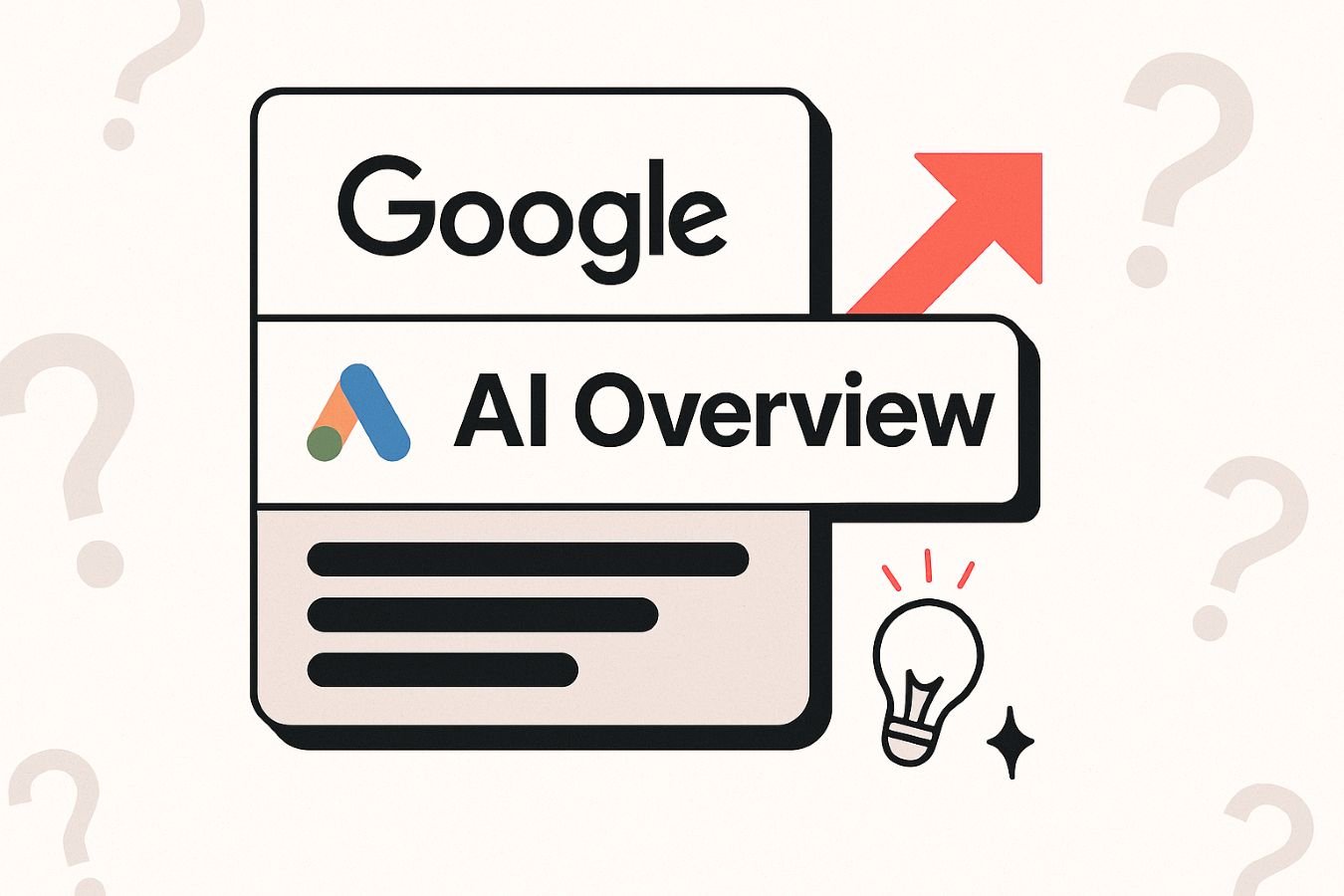We’re getting ready for the New Year with our Google Marketing Platform meetups. At our last event we spoke about SEO for 2020 Vision: What to Focus on for SEO Success in the New Year, with our SEO Director, Leigh-San Mo.
We discussed the latest SEO trends and separated the fundamentals from the fads to focus on practical ideas to improve your search results.
GMP Sydney Meet up. 02.10.2019. Event feel. from Don’t Shoot Yourself on Vimeo.
Read on to learn the SEO tactics that will help you dominate the SERPs and earn more revenue in 2020.
Key Takeaways:
- Search engines are being used more than ever but people are getting answers or getting what they need there and then (no-click search)
- Google will continue to capture more of search and other industries
- But SEO still works:
- IF you cover the three pillars (tech, content and links) then you can expect good results over time
What we’ll cover:
tl;dr? Skip to the slides or skip to the section you want to know more about:
- Search still the most common way to get traffic to your site
- Search drives over 8x more traffic than all social platforms combined
- Google dominates with 95% of market share
- What a typical SERP looks like today
- A higher % of clicks on mobile
- SEO can still drive results if you can adapt to change
- The good ol’ days of Google
- Google Search timeline
- Google algorithm timeline
- Knowledge graphs and answer boxes
- The travel industry: hotels & flights
- Google My Business
- Voice Search
- Search is everywhere
- Where do voice searches come from?
- SEO moving forward
- Technical SEO is more important than ever
- Be mobile-friendly
- Speed matters
- Use schema markup
- Metadata is still important
- Content needs to be valuable, relevant & unique
- E-A-T – Expertise, Authority, Trust
- Your money or your life
- Answer questions
- The inverted pyramid style of writing
- Answer the public
- Links still matter
- Brand mentions
- Offer a discount
- Conclusion
SEO for 2020 Vision
Below, we’ll discuss the big trends, key ideas and some actionable strategies that you can take away to implement on your own sites, giving you a springboard to effectively explore the world of SEO further.

Before we jump in, let’s learn a little more about Leigh.
- 7+ years in the industry
- Worked across everything from brands to not-for-profits to small businesses
- Passionate about helping people gain more from their digital marketing efforts
- Tired of hearing the phrase: SEO is dead
The Big Takeaway
What a study of 3.25 billion site visits says:
Search is still the most common way to get traffic to your site.
Research conducted by marketing site, Growth Badger, looked at a study of over 3 billion site visits. They used Similarweb data which is one of the best sites on the web for website traffic statistics. They studied a variety of different industries and found that the most common way to get traffic was through search engines. This was at 60% compared to other marketing channels.
Search drives over 8x more traffic than all social platforms combined
I love Instagram as much as the next fitness model selling weight loss tea. But Search drives more than traffic than all other social platforms combined. This does vary by industry and if you’re in Crypto, it’s probably more worthwhile to diversify your digital marketing efforts. If you work in the health & medical field, you’d better be putting more eggs in the search basket.
Google dominates with 95% of market share
When we talk about search or search engines what we really mean is Google. As of last month, Google still continues to dominate with over 95% market share. Bing is second at about 3.5%. Duckduckgo is almost non-existent.
What a typical SERP looks like today
Great, Google dominates so let’s get on Google. But what does that look like? Here’s what a typical search engine results page looks like today.
Let’s search for SEO as an example. SEO is great (46% of clicks) vs paid advertising (SEM or Adwords) at 4% of clicks.
You’re probably asking: “What about the other 49%?”
They don’t click.
This is known as ‘no-click search’. They don’t go anywhere. Read on as we cover that in more depth shortly.
A higher % of the number of clicks on mobile
It’s a similar situation on mobile except that on mobile, whilst those AdWords clicks are still about 4%, it’s even less organic clicks that get through, although they still outweigh Adwords.
61% don’t click on mobile.
SEO can still drive results if you can adapt to change
But it’s not all doom and gloom. Here are two clients that I work with who don’t have huge budgets but instead are focussing on the fundamentals of tech, content and link building; and who despite all these changes; continue to grow and gain traffic from the SERPs.
But the big idea that I’d like you to take away today, is that Google has changed from being a gateway…that sends you places…to a destination that now gives you the results, the answers and the info that you need.
The Evolution of Google
Let’s go on a journey back to the old days of Google…
The old days
Back in the old days, it was a simple case of 10 blue links on a page. Google just wanted to send you to what they deemed to be the most ‘relevant’ result. The reason why was that if you got the most relevant and helpful result, then you would be more likely to come back to Google. Google could then serve you ads. The more eyeballs, the more money for Google. Google has always been obsessed with quality results.
Google search timeline
Then they introduced a tonne of features…this is an official chart, a bit old but you can see that Google has constantly changed and evolved to be more useful to the user. What’s really interesting is that a lot of the features that we are so familiar with now have actually been around for a number of years.
Google algorithm timeline
They also added a tonne of algorithm updates. The thing about Algorithm updates (besides the fact that they make SEO’ers like myself occasionally lose sleep) is that you can think of it as the only real weapon that Google has against spammy and bad websites. And they’ve gotten very, very good (as you can see) with providing search results that give users the best experience possible.
Knowledge graphs and answer boxes
Where does that leave us today? We get results like these.
Notice how colourful and interactive it is? You click on the knowledge graph on the top right and you get everything you need to know. If you click on the People also ask box and then decide it’s not the right question; you get an even bigger list of questions.
It’s even more prevalent on mobile devices
This knowledge graph is massive and we had to scroll down below the fold almost three times and still didn’t get to the position 1 listing.
If I had the flu, it’s likely that I would find everything that I need from here. I wouldn’t need to go onto any sites to get more information.
The travel industry: hotels & flights
Another example is with the travel industry which has impacted a lot of our clients to the point that they now have to rethink their SEO strategies. The SERPs show so much information on hotels and allow you to book on the page. On the other hand, things like reviews are organically driven and you can control that by requesting more reviews from happy customers. You can really see the direct interaction that Google wants from its users.
Learn more about SEO changes facing the travel industry here.
Google My Business
On a more local business level, Google My Business has also changed so much. They brought in the option to answer questions, have reviews from all over the web and just on Google itself and even content options like Google posts.
If I was just casually browsing stuff for my house, I might just want to read reviews and compare several companies and Google makes it incredibly easy to do so.
Voice search is a phenomenon
Source: Juniper Research
- 8 billion voice assistants will be in use in 2023
- Growth rate between 2019 and 2023 will be 25.4%
Voice search is going to be critical for the future; not quite yet; but it will continue to grow.
I think as marketers as well; the tools are not exactly quite there yet in terms of identifying the full benefits so that’s an evolution that will also need to happen.
Search is everywhere
We’ve seen ‘no-click search’ grow because of this interactivity that Google provides and wants to capture.
But the other big insight is that search is all around us. It’s always on and always available. You can search in your home, in your car, when you’re on the go. The stats say 20-30% of all searches on Google are from voice search now.
Where do voice searches come from?
One question that people keep asking for SEO for 2020 is: “Should I be optimising for voice search?”
Many are also questioning whether voice search is going to kill SEO.
But guess what?
Voice search IS SEO.
What do you think drives voice? It’s going to be those results that are in position 1 or position zero.
I’ve just recently moved into a new apartment so I did this search a few days ago.
SEO for 2020 Vision
What does this mean for SEO moving forward?
There are more searches but Google is taking more of those clicks so what does this mean for you and your business moving forward?
Technical SEO is more important than ever
For one thing, your technical SEO still really matters if you want to win.
Be mobile-friendly
You need to be mobile-friendly – being mobile-friendly is a huge part of being mobile-first.
Mobile-first indexing is how Google looks at ranking you; it looks at your mobile version of your website so make sure that you don’t have a separate desktop site that is old and difficult to use on mobile. Google will give priority to the mobile version of your site.
Speed matters
Be really, really fast – if you have a version of your site on mobile, you gotta make sure that it’s really fast. There was a speed ranking algorithm update which specifically targets mobile rankings.
One of the most common issues that I see a lot is too large images or huge banners; and they’re uploaded without being compressed or optimised for size. It’s going to take a long time for the server to download your image, which means it’s gonna impact your page loading times for users.
Use schema markup
Stand out on the search results by marking up your content with schema.
These are some of my favourite types of schema markups.
Use this step by step process.
Metadata is still important
It’s still one of the quickest wins (I’ve probably written about 10,000 of these over my career) and always over the long term, no matter the client size, made an impact.
Your titles are still one of the most important on-page elements for targeting your keyword and your meta description is essential for enticing the user and getting them to click. It’s also important for assisting you to get into that position zero. Think of it like conversion rate optimisation on the search results page.
Content needs to be valuable, relevant and unique
The second thing you need to know about to dominate SEO for 2020 is offering users content that is valuable, relevant and unique.
EAT – Expertise, Authority, Trust
These are Google’s quality rater guidelines (164-page set of guidelines used to help human ‘quality raters’ evaluate online content and provide feedback to Google) and there are a tonne of updates that have rolled out.
Your money or your life
YM:YL = Highest standard of content
- Financial advice
- Legal advice
- Health advice
- Anything that will greatly impact a person’s wellbeing
These sites typically fall into the bucket of YM or YL sites. In the financial, legal or health industries. If you’re giving advice that could screw up somebody’s life, Google recognises that you need a higher scrutiny of standards to even appear in the web rankings. So they’ve tweaked the algorithm to make sure that you have authority and can be trusted to write about these sorts of topics.
You need to hire experts that have education, they have to be authoritative, they have to have citations from all the right places, they have to have trust from users.
Answer questions
Answer questions. Get those snippets (position zero answers).
This is a big phenomenon and relates back to voice search. What are we doing on voice search? We’re asking questions. These long-tail conversational questions. This is known as position 0. And you don’t even need to be at position 1 to appear in position 0.
The inverted pyramid style of writing
But how is that possible? To get a position 0 even if you don’t rank in position 1?
They chose this one because the person who wrote it is using the inverted pyramid style which is answering the most basic and informative pieces of the question first.
This is what reporters use so your writing style does impact whether you will own that snippet as opposed to more fluffy pieces of content.
Answer the public
An easy way to find the questions that people are asking is to go to answerthepublic.com
Links still matter
And lastly, don’t forget link building. If you think of your website like a city, links are like the bridges that bring in new visitors every day.
Brand mentions
An example of an easy strategy could be brand mentions if you have a brand or are being mentioned across the web. Use a tool to scrape Google to find potential mentions.
Offer a discount
If students are a target market, you could offer an exclusive discount for example.
The thing to remember is that it’s an exchange of value, whether you offer content, partnership or a discount.
Conclusion
- Search engines are being used more than ever, although people are getting answers or getting what they need there and then
- Google will continue to capture more of search and other industries
- But SEO still works
- If you can cover the three pillars (tech, content and links) then you can expect good results over time
Join our Google Marketing Platform Community
Our Meetup Objectives
- Share Google product expertise
- Share digital marketing expertise
- Increase the adoption of best practices
- Build a community of Google marketers
Join us at the next Google Marketing Platform Sydney meetup or see our other locations here.










































